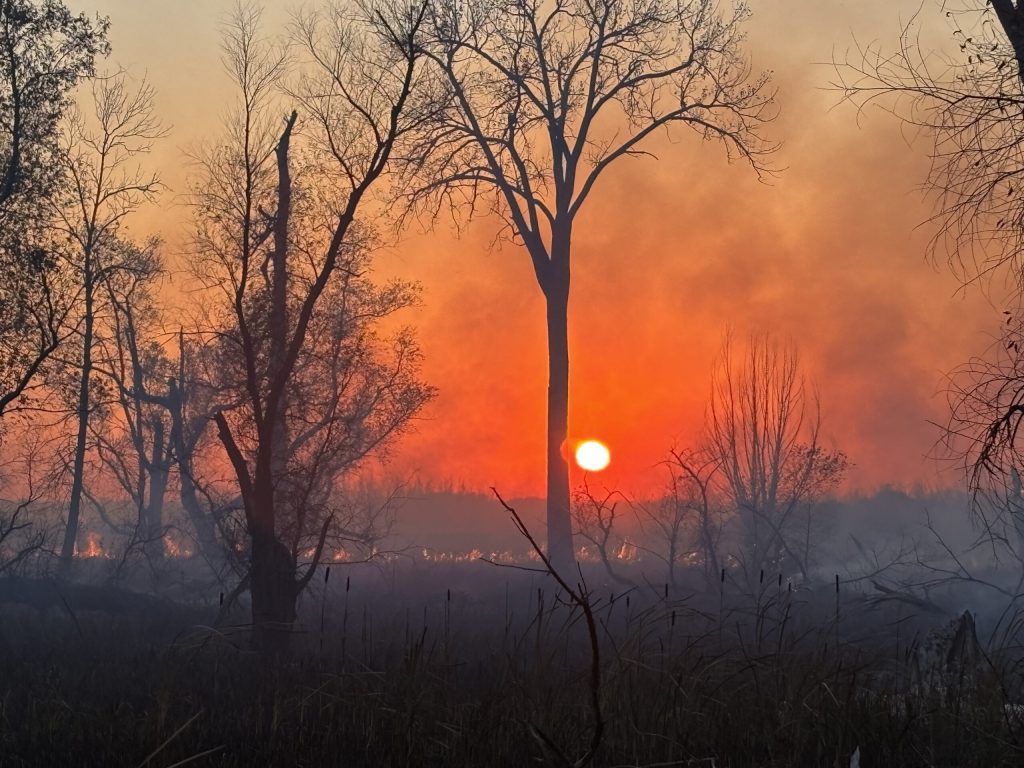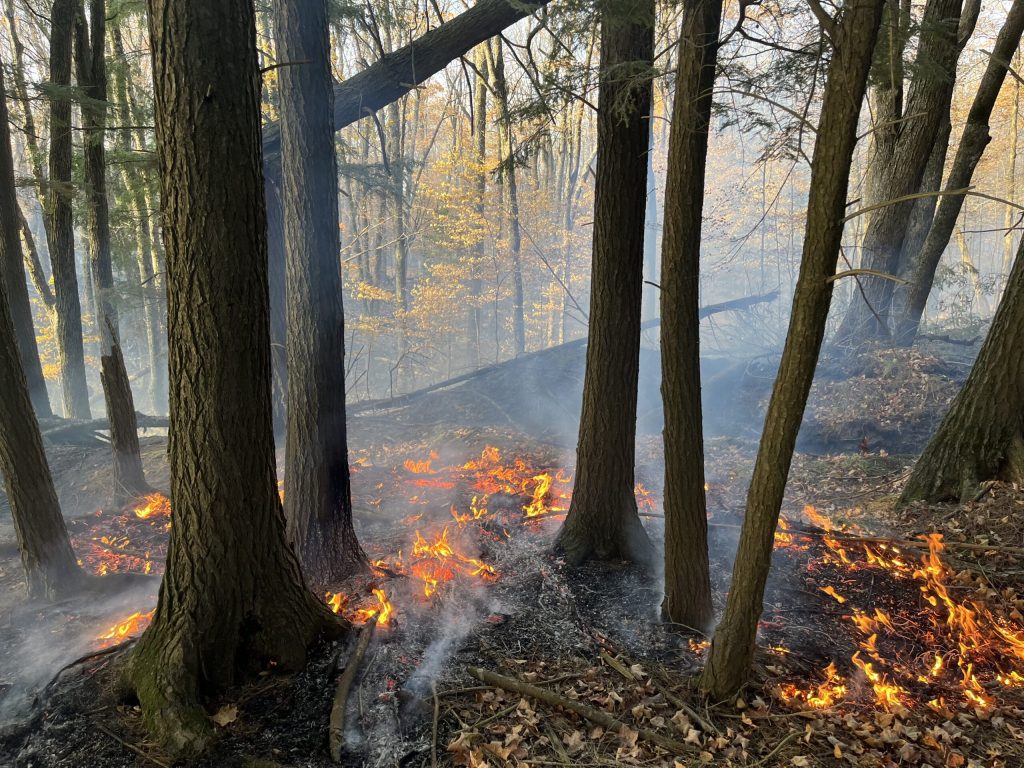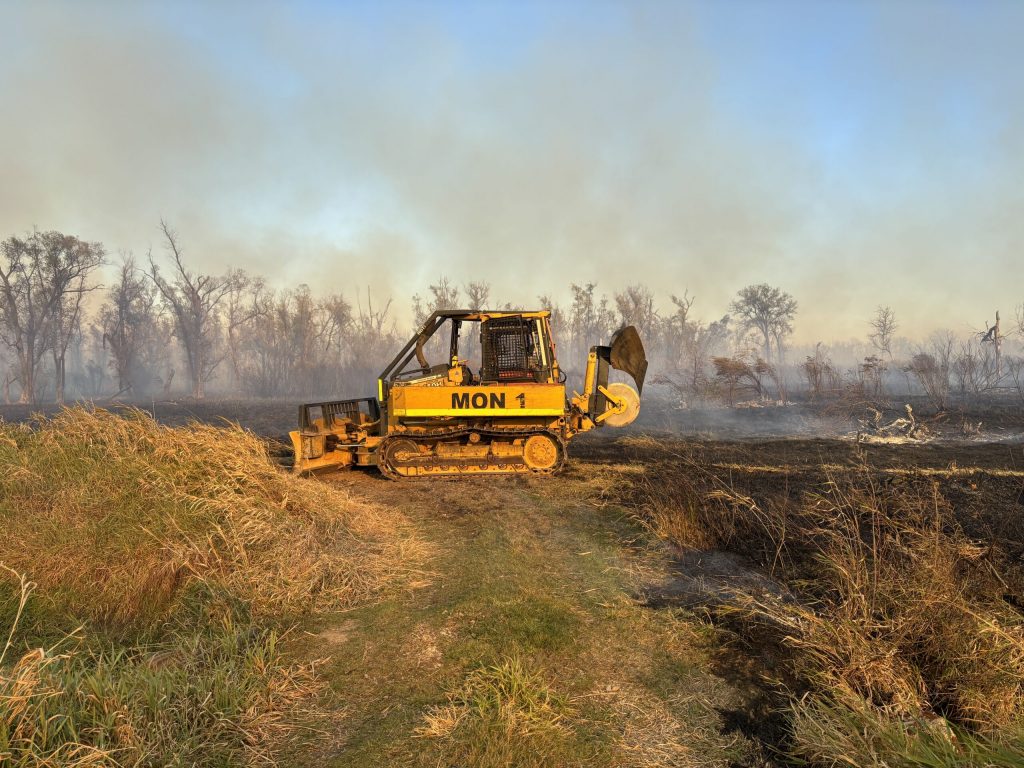Wisconsin Experienced 250 More Wildfires Than Usual in 2024
Drought conditions continue to worsen across Wisconsin.

Smoke from the Bass Lake Fire obscures the sun as drought conditions have increased wildfire risk this fall. Photo courtesy of the Wisconsin DNR
Wisconsin has seen around 250 more wildfires this year than the average for the last decade as the state faces high fire danger due to dry, warm weather.
More than 1,000 wildfires have consumed over 2,400 acres so far this year, according to data from the Wisconsin Department of Natural Resources. The 10-year average for this time of year is 772 wildfires, with an average of under 1,800 acres burned.
“We need some really good soaking rain events or some snow to really kind of put this fire season at bay,” Koele said.
This year, the state has spent just under $800,000 on fire suppression, over $200,000 more than the average for the last decade. Around 600 agency staff are trained and maintain wildland fire qualifications, which includes those involved in firefighting and incident management.
In recent days, Koele said they’ve seen larger fires that have been sparked by equipment, such as lawnmowers and recreational vehicles like ATVs and UTVs. Typically, around one-third of fires are caused by debris burning, which are reported more quickly. With fires sparked by equipment, she said they may go undetected until people see smoke.
Right now, Koele said they’re seeing more fires that are smoldering into the root systems of trees as leaves almost create a cap on top, which burn longer and take more time to extinguish.
“We don’t see it until it kind of rears its ugly head with some smoke, so it does take a lot of water and a lot of resources to put these fires that we’re seeing out right now,” Koele said.
The DNR is urging people to avoid outdoor burning and operating vehicles on dry grass, as well as use equipment early or late in the day. People are also encouraged to take steps to avoid igniting fires from equipment, such as securing trailer chains that could create sparks while driving.

A fire smolders on the forest floor of the Flambeau River State Forest as drought conditions have increased wildfire risk this fall. Photo courtesy of the Wisconsin DNR
As the climate warms, the state has grown more vulnerable to wildfires
As temperatures warm, climate scientists say the state is increasingly vulnerable to wildfires, according to a report from the Wisconsin Initiative on Climate Change Impacts. That comes as the state is seeing less rain in northern Wisconsin. That stresses forests and makes for longer growing seasons and vegetation that dries out at a faster rate in the spring and summer due to less snowpack.
“We’re shooting upward in drought conditions now,” Vavrus said. “In terms of the magnitude, we’re right back where we were a year ago, which is remarkable considering that only a month ago drought conditions emerged anywhere in Wisconsin.”
The latest U.S. Drought Monitor released Thursday shows all of the state is abnormally dry and 77 percent is experiencing moderate drought. Almost one-third of the state, primarily in northwestern and northeastern Wisconsin, has severe drought conditions.
“As our climate warms, we expect to see more of these abnormally warm conditions,” Vavrus said. “There’s also evidence that with climate change, we’re likely to have more of these flip flops between too wet and too dry.”

The Bass Lake Fire in Price County consumed 35 acres as warm, dry weather have increased wildfire risk this fall. Photo courtesy of the Wisconsin DNR
Vavrus noted Wisconsin saw a soggy start to the summer that has since slipped into drought conditions that haven’t relented. That’s helped farmers, who have harvested crops weeks ahead of schedule. At the same time, it reduces forage for livestock. Without rain or snow, dry conditions could make it harder to till up land for spring planting next year.
However, Vavrus noted La Niña has been slower to develop than normal. The climate pattern that causes waters in the Pacific Ocean to be cooler than normal is typically associated with above-normal snowfall in the Great Lakes region. But Vavrus said precipitation can vary widely across the region.
“That’s why I say I wouldn’t get our hopes up if you’re looking for a wet winter,” Vavrus said. “But at this point, a wet winter would really benefit us, because we are so dry right now.”
Warm, dry weather sparks hundreds more wildfires than normal was originally published by Wisconsin Public Radio.
If you think stories like this are important, become a member of Urban Milwaukee and help support real, independent journalism. Plus you get some cool added benefits.


















